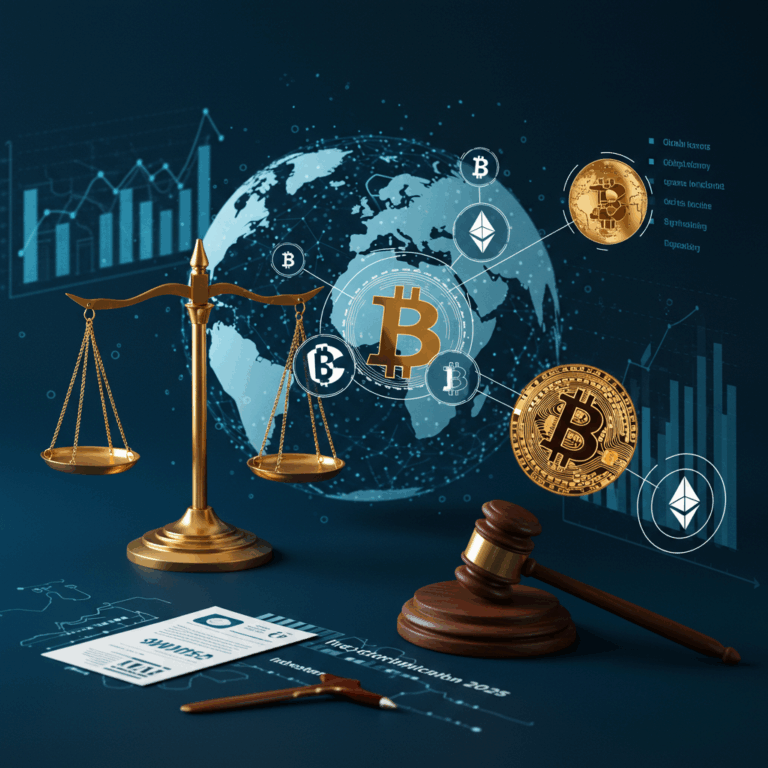Introduction to Cryptocurrency and Its Technological Foundation
Cryptocurrency financial market developments have redefined how global finance operates. Beginning with Bitcoin in 2009, cryptocurrencies introduced decentralized ledgers through blockchain technology, creating an ecosystem that prioritizes transparency, security, and the elimination of traditional intermediaries. This fundamental shift has garnered attention from stakeholders across industries and regulatory bodies worldwide.
At its core, cryptocurrency is a form of digital asset using cryptographic methods for transaction security, new unit creation, and value transfers. Blockchain’s immutable, distributed nature—verified by consensus, not a central authority—enhances the integrity of every transaction. This innovation draws from advances in distributed computing and the increasing interconnectedness afforded by the internet, making instant peer-to-peer value transfers possible at a global scale.
The emergence of programmable, borderless, and censorship-resistant financial systems through cryptocurrencies challenges longstanding models of economic interaction. Governments, technologists, and financial institutions now find themselves responding to the implications and complexities of a rapidly changing landscape. For an overview of blockchain concepts, readers may reference the [Wikipedia page on cryptocurrency](https://en.wikipedia.org/wiki/Cryptocurrency).
Key Developments in the Cryptocurrency Ecosystem
Bitcoin’s creation launched a new paradigm, but the ecosystem quickly diversified. Altcoins such as Litecoin, Ripple, and Ethereum have introduced innovations, ranging from alternative consensus models to the integration of programmable smart contracts. Ethereum, in particular, revolutionized decentralized applications (dApps) and enabled decentralized finance (DeFi), where lending, borrowing, and asset transfers occur without centralized control.
Stablecoins, pegged to fiat currencies (like the US Dollar), offer much-needed price stability, facilitating mainstream transaction use and addressing the volatility concerns inherent to earlier assets. Privacy-oriented coins such as Monero and Zcash use advanced cryptography to mask transactional data, appealing to users who place a premium on confidentiality.
The boom in Initial Coin Offerings (ICOs), Security Token Offerings (STOs), and other alternative fundraising methods expanded options for leveraging cryptocurrency for entrepreneurship and capital acquisition. However, these innovations drew attention from global regulators, prompting comprehensive guidelines and, at times, enforcement actions.
Layer-2 solutions (e.g., Lightning Network) and cross-chain bridges address blockchain scalability and interoperability, accelerating transaction times and reducing costs. Yet, these advances introduce new technical and governance challenges, emphasizing the balance between innovation, usability, and risk management. For further context, the [World Economic Forum](https://www.weforum.org/agenda/archive/cryptocurrencies/) provides overviews of cryptocurrency-related advancements.
Market Dynamics and Trading Mechanisms
The cryptocurrency financial market functions continuously, enabling trading worldwide without the typical boundaries of traditional stock exchanges. Asset prices are determined through open-market bids and asks, responding rapidly to global events, macroeconomic pressures, and social sentiment.
Digital assets trade on both centralized and decentralized exchanges. Centralized venues often provide greater liquidity, custodial solutions, and robust compliance regimes. Conversely, decentralized exchanges (DEXs) enable non-custodial, peer-to-peer trading reliant on smart contracts and algorithmic market making. Each model presents unique opportunities and risks—including differences in transparency, counterparty exposure, and regulatory scrutiny.
Innovative trading mechanisms include market orders, limit orders, algorithmic trading, and the use of derivatives (like futures and options), widening the spectrum of investor behavior and risk management strategies. The proliferation of derivatives instruments has exposed participants to leverage risks but has also facilitated sophisticated hedging and price discovery.
Liquidity and volatility remain central features of cryptocurrency financial markets, frequently reflecting speculative cycles and global headlines. Traditional financial products, including exchange-traded funds (ETFs) and futures tied to digital assets, have introduced increased participation by institutional investors, strengthening overall market maturity while presenting new regulatory and systemic considerations.
Security Considerations and Emerging Risks
Custodianship in digital finance diverges from traditional banking. Cryptocurrency holders control assets via cryptographic private keys—stored in software, hardware wallets, or paper forms. Loss or compromise of these keys typically results in the irreversible loss of funds, making personal security paramount. Hardware wallets, multisignature arrangements, and air-gapped (offline) storage solutions help mitigate risks.
Notably, cryptocurrencies’ decentralized and pseudonymous nature creates both resilience against centralized attacks and vectors for exploitation. Incidents like major exchange breaches, protocol vulnerabilities, and phishing attacks have culminated in substantial financial and reputational losses. The cryptocurrency financial market relies on a thriving landscape of security auditors, bug bounty programs, and white-hat hacking communities to identify and remedy vulnerabilities.
Emergence of decentralized autonomous organizations (DAOs) and cross-chain operations introduces new attack surfaces and governance questions. Risk management in this evolving environment is dynamic, adapting to a continuous influx of innovations and new threat vectors. Entities such as the [European Union Agency for Cybersecurity (ENISA)](https://www.enisa.europa.eu/topics/csirt-cert-services/guidelines/resource-material/cryptocurrency) offer evolving guidance for maintaining security in digital asset markets.
Regulatory Approaches and Compliance Frameworks
The rapidly evolving cryptocurrency financial market tests the limits of existing regulatory frameworks. Jurisdictions around the globe approach oversight differently, but most focus on anti-money laundering (AML), combating the financing of terrorism (CFT), taxation, and consumer protection.
Licensing regimes emerged for exchanges, wallet providers, and token issuers, with authorities often requiring compliance with know-your-customer (KYC) procedures. While these measures aim to deter illicit activity and boost investor confidence, privacy-minded protocols and decentralized platforms challenge enforcement. Ongoing debates weigh transparency against user autonomy, regulatory certainty against technological flexibility.
Recognition and classification of digital assets vary internationally—as property, commodities, securities, or multiple hybrid forms. National courts and regulatory bodies are still shaping operational parameters, affecting how companies design products, handle investor disclosures, and structure compliance processes. Global cooperation, visible in organizations like the Financial Action Task Force (FATF), seeks to harmonize and strengthen standards for digital finance. An in-depth analysis can be found on the [FATF website](https://www.fatf-gafi.org/en/topics/virtual-assets.html).
Institutional Adoption and Integration
Historically, cryptocurrencies were dismissed by mainstream finance as niche or speculative. However, the narrative shifted as regulatory clarity improved, secure custody solutions became feasible, and new financial instruments—such as ETFs and structured notes—were approved in major markets. Asset managers, banks, and corporations began to incorporate digital assets as part of portfolios, treasury holdings, and payment solutions.
Payment service providers integrated support for cryptocurrency, enabling consumer-to-business settlement and international remittances with reduced fees. Decentralized platforms reimagined solutions for supply chain transparency, trade finance, and asset tokenization. These developments underscored the growing overlap between traditional finance and the new digital asset economy.
Institutional adoption brings fresh benefits, including deeper market liquidity, improved price discovery, and enhanced transparency. Simultaneously, it introduces classical risks—counterparty exposure, operational complexity, and cross-border compliance. Forward progress largely depends on technological resilience, evolving regulatory guidance, and sustained user and institutional trust.
Social, Economic, and Environmental Implications
Beyond price speculation and trading, the cryptocurrency financial market exerts broad socioeconomic influence. In regions with underdeveloped banking or restrictive monetary policy, digital assets have enabled improved access to financial services, cost-effective remittances, and greater monetary flexibility. The decentralized nature allows users to bypass legacy institutions and barriers.
Environmental concerns, especially surrounding proof-of-work mining, led to public criticism over energy consumption and carbon footprint. Emerging protocols utilizing proof-of-stake and hybrid approaches address efficiency and sustainability. As debate continues, industry-led and regulatory efforts seek to balance innovation with responsible resource management.
Token design and governance raise issues around fairness, concentration of ownership, and voting rights. The evolution of decentralized organizations, non-fungible tokens (NFTs), supply chain verification tools, and programmable financial contracts broadens the economic utility of cryptocurrencies, shifting digital assets further into the mainstream economy.
These impacts are shaped by technological progress, regulatory interventions, and adaptive user behaviors, with the market remaining agile in response to policy, demand, and societal trends. Empirical studies and resources about social and economic implications can be found at leading academic institutions and non-profits like the [International Monetary Fund (IMF)](https://www.imf.org/en/Topics/fintech/digital-currencies).
Future Trends and Technological Innovations
The trajectory of the cryptocurrency financial market continues upward, propelled by research and development. New blockchains prioritize fast transaction throughput, privacy, and customizable governance. Zero-knowledge proofs, delegated proof-of-stake, and sharded architectures offer foundations for scaling digital assets to mass adoption.
Interoperability—connecting disparate blockchains—enables frictionless transfers, composable applications, and cross-system lending. Standards for tokenization and cross-chain messaging develop, supporting a universe where financial and real-world value can move seamlessly between platforms. Decentralized finance evolves rapidly with open-source experimentation and robust governance models.
As mainstream enterprises deploy blockchain for use cases like digital identity, supply chain management, and cross-border settlements, the influence of digital assets expands further into the global economy. The sector’s future will blend high performance, accessibility, data privacy, and regulatory compatibility. Ongoing research focuses on user experience, security upgrades, and cost efficiency, ensuring the continued evolution of programmable financial infrastructure.
Conclusion
The cryptocurrency financial market marks a significant redefinition of finance, blending cryptographic innovation with decentralized systems. Its ongoing evolution reflects the interplay between technology, institutional acceptance, regulatory changes, and socioeconomic shifts. As new solutions emerge, the foundational influence of cryptocurrencies on global financial practices continues to expand and adapt.



